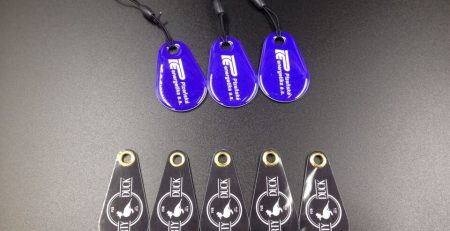1.1 RFID and its characteristics
1. RFID is the abbreviation of radio frequency identification, that is, identification through radio waves. It is a non-contact automatic identification technology realized by electromagnetic coupling.
2. In the RFID system, the identification information is stored in an electronic data carrier, which is called a RFID transponder.
3. The identification information stored in the RFID transponder is read by the reader.
4.The RFID reader can not only read but also write. The reading and writing process is realized through wireless communication between the two parties.
1.2 The basic interaction principle of RFID
1. The RFID transponder is an integrated circuit chip, and its work needs to be provided by the reader. The reader generates a radio frequency carrier to provide energy for the transponder
2. The information exchange between the reader and the transponder is usually carried out in the inquiry-response mode, and there must be a strict timing relationship, and the timing is provided by the reader
3. Two-way data exchange can be realized between the transponder and the reader. The data information stored by the transponder is transmitted to the reader by the carrier modulation method. The commands and data from the reader to the transponder usually adopt the carrier gap.
4. Coupling methods can be divided into inductive coupling methods and backscatter coupling methods
5. RFID operating frequency
①(LF) Low frequency②(HF)High frequency③(UHF)Ultra high frequency
1.3 Inductive coupling method
The radio frequency carrier frequency fc (operating frequency) of the inductive coupling mode is 13.56MHz and the frequency band less than 135KHz
1. The energy supply of the transponder
The reader provides energy, generates an induced current through the magnetic field cutting the magnetic field, and generates an induced voltage on L2, which becomes the DC voltage required by the transponder after rectification.
————————————————
Copyright statement: This article is the original article of the CSDN blogger “Pz_mstr”. It follows the CC 4.0 BY-SA copyright agreement. Please attach the original source link and this statement for reprinting.




